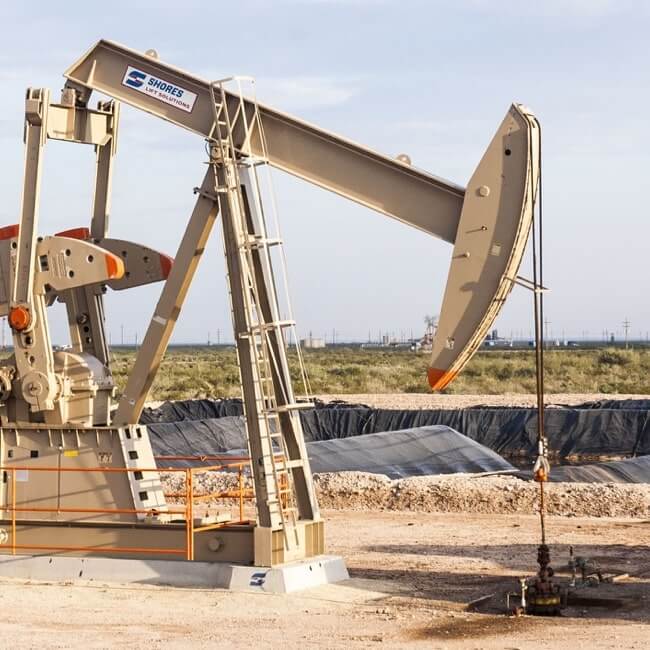Moody's downgrades El Salvador's issuer rating

PRESS RELEASE
By Moody's
New York, April 13, 2017 -- Moody's Investors Service has today downgraded El Salvador's issuer and senior unsecured debt ratings to Caa1 from B3 and changed the outlook on the issuer rating to stable from negative.
The key drivers of the downgrade to Caa1 are:
1) The recent missed payments on pension-related bonds signal a higher risk that the political impasse in the Legislative Assembly could lead to missed payments on government debt obligations
2) The failure to reach an agreement to issue long-term debt raises government liquidity risks and tests local banks' capacity to absorb additional short-term debt, which is already at record high levels.
The stable outlook reflects our view that the Caa1 rating captures the balance of risks to El Salvador's sovereign credit profile.
El Salvador's long-term foreign-currency bond and deposit ceilings were lowered to B2 from B1. Short-term foreign-currency bond and deposit ceilings remain unchanged at NP.
RATINGS RATIONALE
RATIONALE FOR DOWNGRADE TO Caa1 FROM B3
POLITICAL RISK RAISES DEBT REPAYMENT RISK
On April 7, the trust fund created by El Salvador's government to finance obligations to the pension system (Fideicomiso de Obligaciones Previsionales, FOP) began to miss payments on pension certificates (Certificados de Inversion Previsional, CIP). The pension certificates are held by private and public sector pension funds.
It is our understanding that the pension certificates do not carry a sovereign guarantee. Therefore, based on the available information, we do not consider the missed payments on the pension certificate to be a default by the government of El Salvador under Moody's definition of default.
However, this credit event constitutes the first time a decision has been made to miss a debt-related payment. Prior to this, the government had made all debt related payments, while building up arrears in other non-debt payments.
The missed payment occurs in the context of a political impasse between the ruling party and the main opposition party in the Legislative Assembly. Disagreements between the two parties have obstructed fiscal policy and government debt management, leading to rising arrears and the recent missed payment. We see the missed payment on the pension fund obligations as a signal that risks for government debt payments have risen.
GOVERNMENT LIQUIDITY RISKS CONTINUE TO RISE
The government is required to obtain a two thirds majority approval in the legislative assembly to issue long term debt. This has been a long standing feature of El Salvador's debt management framework. However, over the past year, the ruling party (FMLN) has failed to secure approval to issue long-term debt from the main opposition party (ARENA), due to disagreements over policy priorities and an increasingly acrimonious political relationship.
The government has instead financed itself with short-term debt (LETES). In January 2016, LETES surpassed the $800 million mark, a level at which refinancing conditions began to deteriorate, reflecting the limited absorption capacity of the relatively shallow domestic market. By November 2016, banks began to slowly reduce their exposure to LETES, suggesting tightening liquidity conditions for government debt.
Short-term government paper outstanding is now about $1.06 billion, challenging local banks' capacity to absorb additional amounts.
While it is unlikely that banks would stop rolling over LETES, which could lead to a default on short-term debt, the longer the political impasse prevents the issuance of long term debt, the greater the liquidity pressure in the short term debt market.
The ruling party and the opposition are currently in negotiations to issue long-term debt to retire short-term debt. Should such an agreement be reached, it would alleviate near term liquidity pressures. However, these pressures would likely return. For instance, last November the
Legislative Assembly did reach an agreement to authorize issuance of $550 million in long-term debt and also approved a Fiscal Responsibility Law (FRL) which, at that time, represented an important break to a political impasse that had been ongoing for a year.
The November agreement allowed the government to retire only $307 million of LETES and pay 2016 arrears. The potential reduction in LETES is insufficient to materially lower liquidity risks as the total outstanding amount will remain at around $800 million. If no additional long-term debt issuance is authorized (the government's original request was $1.2 billion) the authorities will be forced to prioritize payments and will likely run up arrears.
Even though negotiations are ongoing, there have been multiple setbacks, and it has become increasingly clear that the two political parties' positions are very difficult to reconcile. Negotiations revolve around amending the 2017 budget to include underestimated spending and on how to comply with the FRL, which mandates a reduction in non-financial public sector deficit by at least three percentage points of GDP over the next three years. Reaching an agreement will likely become even more difficult in the second half of 2017 as campaigns for legislative elections, which are scheduled for March 2018, intensify.
RATIONALE FOR THE STABLE OUTLOOK
The stable outlook reflects our view that the Caa1 rating captures the balance of risks to El Salvador's credit profile. It is our baseline assumption that under increased financial strain the government will prioritize government debt service over other expenses. However, the risks that political considerations could change priorities have risen.
WHAT COULD CHANGE THE RATING UP/DOWN
Upward pressure on the Caa1 rating would come from a material reduction in political and government liquidity risks. Such a reduction could stem from an additional agreement between the FMLN and ARENA to approve a second tranche of long-term debt issuance, sufficient to retire a significant portion of short-term debt paper, and prevent a recurrence of future political disagreements raising debt repayment risks. Fiscal adjustment that reduced borrowing requirements would also be positive for the credit profile.
Downward pressure on El Salvador's Caa1 ratings would emerge if we no longer expected that the government would prioritize debt service over other payments and saw more imminent pressures towards a credit event that caused losses to bond holders that are higher than those consistent with a Caa1 rating. Such a change in view would occur if an agreement to access long-term funding remains elusive for a prolonged period. Even though Moody's does not rate El Salvador's short-term government debt, further escalation of financial stress related to LETES would raise the credit risks related to the government's long-term debt.
GDP per capita (PPP basis, US$): 8,620 (2015 Actual) (also known as Per Capita Income)
Real GDP growth (% change): 2.4% (2016 Actual) (also known as GDP Growth)
Inflation Rate (CPI, % change Dec/Dec): 1.1% (2016 Actual)
Gen. Gov. Financial Balance/GDP: -3.2% (2016 Actual) (also known as Fiscal Balance)
Current Account Balance/GDP: -2.5% (2016 Actual) (also known as External Balance)
External debt/GDP: 59% (2016 Actual)
Level of economic development: Low level of economic resilience
Default history: No default events (on bonds or loans) have been recorded since 1983.
On 13 April 2017, a rating committee was called to discuss the rating of the El Salvador, Government of. The main points raised during the discussion were: The issuer's governance and/or management, have materially decreased. The issuer has become more susceptible to event risks.
Subscribe to the leading business intelligence platform in Latin America with different tools for Providers, Contractors, Operators, Government, Legal, Financial and Insurance industries.
News in: Political Risk & Macro (El Salvador)

Cabei unveils over US$1bn in financing for Guatemala, El Salvador
The development bank approved US$899mn in funding for the coffee industry's reactivation, hospital expansions and the criminal justice system, amon...

CentAm development bank has 'many projects on the table'
Dante Mossi, executive director of the Central American Bank for Economic Integration (Cabei), talks with BNamericas about the projects that will l...
Subscribe to Latin America’s most trusted business intelligence platform.
Other projects
Get key information on thousands of projects in Latin America, from current stage, to capex, related companies, key contacts and more.
- Project: Serra da Borborema III Wind Farm (Serra da Borborema Complex)
- Current stage:

- Updated:
4 hours ago
- Project: Serra da Borborema II Wind Farm (Serra da Borborema Complex)
- Current stage:

- Updated:
4 hours ago
- Project: Jambreiro
- Current stage:

- Updated:
3 hours ago
- Project: Guayasamin Road Solution
- Current stage:

- Updated:
4 hours ago
- Project: Daule - Pedro Carbo river irrigation project
- Current stage:

- Updated:
3 hours ago
- Project: Aguada Toledo - Sierra Barrosa area
- Current stage:

- Updated:
4 hours ago
- Project: Porto das Águas thermoelectric power plant expansion
- Current stage:

- Updated:
4 hours ago
- Project: Zacatecas 360 photovoltaic plant
- Current stage:

- Updated:
4 hours ago
- Project: Improvement of Route 66 Camino de la Fruta (Second Concession)
- Current stage:

- Updated:
44 minutes from now
- Project: Submarine Cable Aurora
- Current stage:

- Updated:
4 hours ago
Other companies
Get key information on thousands of companies in Latin America, from projects, to contacts, shareholders, related news and more.
- Company: Sereno Solar Energia LTDA
- Company: Subsea 7 S.A. (Subsea 7)
-
Subsea 7 S.A. is a provider of offshore projects and services for the energy industry, including the oil and gas and the renewable energy markets. The company works in all water...
- Company: Consorcio Santa María 004
- Company: Castro Tcherassi S.A. (Castro Tcherassi)
-
The description contained in this profile was taken directly from an official source and has not been edited or modified by BNamericas researchers, but may have been automatical...
- Company: Puerto Brisa S.A. (Puerto Brisa)
-
The description contained in this profile was taken directly from an official source and has not been edited or modified by BNamericas researchers, but may have been automatical...
- Company: Petrobahia S.A. (Petrobahia)
-
The description contained in this profile was taken directly from an official source and has not been edited or modified by BNamericas researchers, but may have been automatical...
- Company: Alca Ingeniería S.A.S. (Alca Ingeniería)
-
Alca Ingeniería S.A.S. (Alca Ingeniería) is a Colombian civil engineering company founded in 2001 with offices in Bogota. Alca Ingeniería participates in the 20-year concession ...
- Company: Triturados El Chocho S.A.S. (Triturados El Chocho)
-
The description contained in this profile was taken directly from an official source and has not been edited or modified by BNamericas researchers, but may have been automatical...
- Company: Atvos
-
The description contained in this profile was taken directly from an official source and has not been edited or modified by BNamericas researchers, but may have been automatical...
- Company: Cotavesa SRL. (Cotavesa)
-
The description contained in this profile was taken directly from an official source and has not been edited or modified by BNamericas researchers, but may have been automatical...





